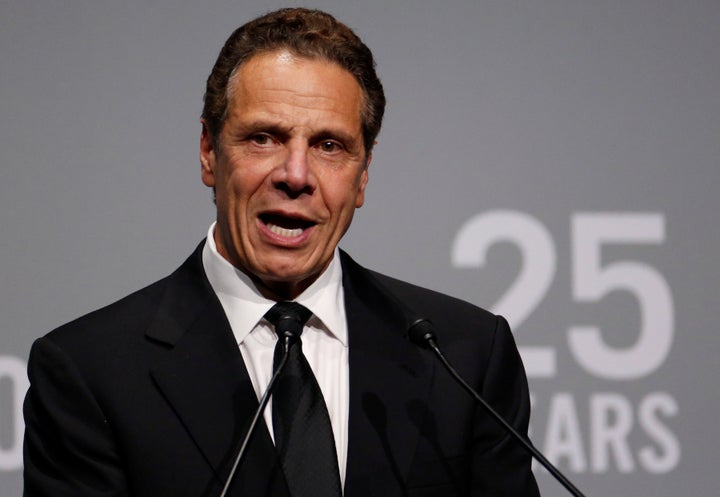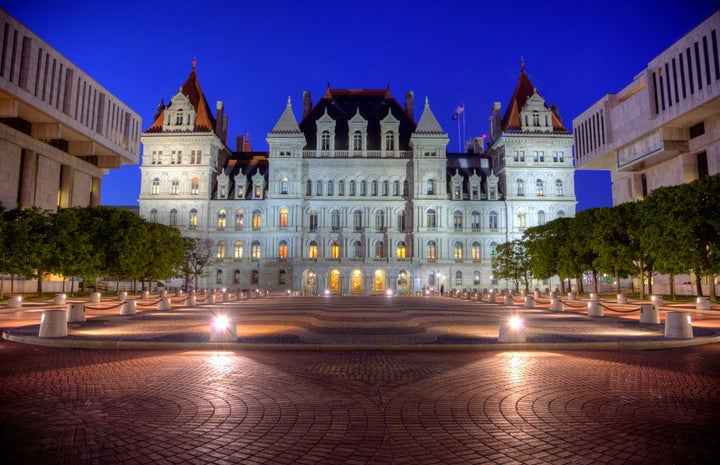New York residents who go to the polls on Thursday will do so despite a number of obstacles, imposed by the state, that make it harder for people to vote. The lack of easy ballot access has essentially created a system of suppression in what’s considered one of the bluest states in the country.
Thursday is the second primary election day New Yorkers have had this year. In June, they voted in primaries for federal contests. This week, they’re having their say in the races for governor and other state officials. Most states put all of their elections on one day.
New York’s confusing primary system is part of a larger set of voting laws and procedure critics say are among the worst in the country and that state lawmakers could easily fix, but haven’t.
″If progressives are not already alarmed at how bad our voting laws are in New York, they should be,” said state Sen. Michael Gianaris, a Democrat who has introduced voting reforms legislation. He added that New York’s voting laws were on par with those in southern states, which have a history of severe voting restrictions, and that passing voting reforms would be a top priority if Democrats take back control of the state Senate in November.
“If progressives are not already alarmed at how bad our voting laws are in New York, they should be.”
- State Sen. Michael Gianaris (D)
One example of New York’s poor voting laws is the dual primary system. After a federal judge ordered the state to move up its federal primaries to June in 2012, lawmakers never did anything to move the state’s primary so it aligns with the federal one. Had they done that, it would have reduced confusion and save the state some money. In 2016, there were three separate primaries ― one for president, one for federal offices and one for state offices.
New York is also one of just 13 states that don’t have early voting and requires voters to have an excuse if they want an absentee ballot. The state also has the earliest cutoff for changing party affiliation in order to vote. Voting reforms like automatic and same-day registration, embraced by other states, have gone nowhere in the state legislature.
Given these restrictions, it’s no surprise that New York consistently has some of the lowest voter turnout in the country. In 2014, there were over 5.8 million registered Democrats in the state ― about 10 percent of them (574,350 people) voted in the party’s primary for governor.
“It’s like institutionalized voter suppression in New York state,” said Neal Rosenstein, the government reform coordinator at New York Public Interest Research Group. “There is a cognizant, an intentional decision and that is by legislators, the Senate in particular, not to entertain, or advance proven reforms that would increase electoral participation.”

The Democratic-controlled state Assembly has passed legislation that would allow for early voting, same-day registration and no-excuse absentee voting, but those measures have all stalled in the GOP-controlled state Senate. Gov. Andrew Cuomo (D), who is facing off against progressive challenger Cynthia Nixon in Thursday’s Democratic gubernatorial primary, has publicly called for those voting reforms. But some advocates question whether the governor has been willing to use his political capital to make those reforms happen.
Susan Lerner, the executive director of Common Cause New York, said she thought reform advocates were on the verge of some progress this year. In his annual budget, Cuomo included funding for 12 days of early voting and automatic registration, as well as automatic voter and same-day voter registration in his 2018 budget. That optimism, she said, quickly vanished during budget negotiations between Cuomo and top state lawmakers.
“That initially sent a message that the governor wanted this to happen, and he would negotiate for it. By the time the behind-closed-doors budget negotiations took place, it was one of the first things to drop off the table,” said Lerner whose group lobbies for voting reforms. “You have to wonder who was fighting for it, as opposed to making big public statements.”
“In off-the-record conversations with legislators and legislative staff they tell you over and over again that what the governor wants, the governor in almost every instance gets,” she added.
“You have to wonder who was fighting for it, as opposed to making big public statements.”
- Susan Lerner, Common Cause New York
Critics like Nixon say the governor is partly to blame for GOP control of the state Senate, which has blocked voting reform, by empowering an unusual power-sharing agreement between Republicans and a faction of breakaway Democrats. The governor denies responsibility and the breakaway Democrats reunited with the party earlier this year.
Rich Azzopardi, a Cuomo spokesman, defended the governor’s record on voting rights and cast blame on Senate Republicans.
“It was Governor Cuomo who launched New York’s first online voter registration system and signed executive orders directing state agencies to greatly expand access to voting registrations and restoring voting rights to formerly incarcerated New Yorkers,” he said in a statement. “He has also proposed much needed legislative reforms to adopt early voting and break down other barriers to participation in the democratic [process] ― efforts that have been continuously blocked by the Senate Republicans. It is our hope that these much-needed reforms will pass next session under a Democratic Senate.”
One point of particular frustration in New York is the deadline the state sets for declaring a political party to vote in a primary. New York only allows people registered with a party to cast ballots in that party’s primary. If someone wants to change their party registration to vote in a primary, they have to do so no later than 25 days before the previous general election. That means that voters have to update their records, in some cases, nearly a year in advance of a primary. Anyone voting on Thursday’s primary had to change their party affiliation by October 13, 2017. As of April 1, there were over 2.6 million voters unaffiliated with a political party in the state.
The cutoff is the earliest in the country and drew national attention during the 2016 presidential elections when many supporters of Sen. Bernie Sanders (I-Vt.) realized they could not vote for him in the Democratic primary because they had not registered in time. Eric and Ivanka Trump also couldn’t vote for their father in the New York Republican primary in 2016 because they had missed the registration deadline.
Lerner said the law, which dates back to 1949, was born out of concern that party bosses would register voters in one party shortly before an election to try and sway the outcome. Lerner said that process, called “party raiding,” is now virtually nonexistent, but since 2016, lawmakers haven’t been able to reach an agreement on what an acceptable cutoff would be.
“They can’t decide and therefore nothing gets changed,” she said.

Jessica Wisneski, a deputy director of the progressive grassroots group Citizen Action, said the state’s restrictive voting laws made it more difficult to oust incumbents from office. The state’s voting laws, she said, “perpetuate a lot of non-competitive elections and the same old old guard being in the halls of power in Albany.”
Some provisions of New York’s voting law date back to the state’s 1894 constitution, which prevents same-day registration and no-excuse absentee voting. New York lawmakers must pass a constitutional amendment in two consecutive sessions before sending it to voters for approval (the constitution can also be amended through a constitutional convention).
Another measure from the 1894 document requires that the state and local election boards be evenly split between the two major parties to prevent either party from having too much control over elections. Today, the equal political split has led to deadlock and a patronage-based system of hiring on the country election boards, advocates say.
“We’re voting in a 19th-century scheme that’s well out of date and desperately in need of reform and modernization. The reforms that were needed in the 19th century are nearly a century and a quarter old and New York has changed a lot, but the laws haven’t,” said Jeffrey Wice, an attorney who has worked with Democrats in the legislature on redistricting issues and a fellow at the Rockefeller Institute of Government. “The laws are behind the times and New York suffers as a result.”
Daniel Marans contributed reporting.
